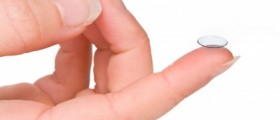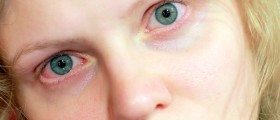
Keratitis represents inflammation of the cornea, part of the eye that coverts the iris, pupil and the anterior chamber of the eye. There are many factors which contribute to such inflammation and many infective agents involved in the process. For example, noninfectious keratitis develops as a result of injuries to the eye (e.g. fingernail scratch, inappropriate use of contact lenses etc.). On the other hand, infectious keratitis, as the very name suggests, can be associated with different infective agents including bacteria, viruses, fungi and parasites. The condition typically features with eye redness, intense pain, excessive tearing and sometimes discharge form the eye and difficulty opening the eyelid. Patients may additionally complain about itchy and burning sensation, blurred vision and photophobia (increased sensitivity to light). The condition also causes gritty sensation which can be unbearable.
Prevention of Keratitis
In people in whom keratitis develops as a consequence of improper use of contact lenses the inflammation may be prevented with the following measures:one should opt for daily wear contactscontact lenses must be removed each time prior going to sleephands must be kept impeccably clean while manipulating contact lensesone should stick to eye care professional's instructions when it comes to adequate care of contact lenses contact lenses must be replaced when it is recommendedthey must never be worn while swimmingApart from the previously mentioned, people may also prevent keratitis caused by infective agents, particularly those caused by viruses. For example, if an individual is already suffering from cold sores or fever blisters, he/ she is supposed to avoid touching his/her eyes and this way prevent spread of the virus to the cornea. Furthermore, people who have to use corticosteroid eye drops should stick to doctor's recommendations and never apply these drops for longer period of time. The use of such drops increases the risk for viral keratitis. And finally, avoid sharing towels with other people because by rubbing the eyes with these items one may contract some bacteria and develop certain types of bacterial keratitis.
Treatment for Keratitis
If, in spite of all the preventive measures, one eventually develop keratitis he/ she is due to consult a health care provider and will be provided with most convenient treatment.
Noninfective keratitis is generally treated according to the underlying cause. Uncomplicated cases caused by a scratch or inadequate use of contact lenses require a 24-hour patch and certain drugs that are basically applied topically in a form of drops or ointments. Treatment for infective keratitis depends on the infective agent that has led to inflammation of the cornea. Bacterial keratitis is treated with antibiotics, viral with antiviral medications while fungal keratitis requires adequate antifungal medications.
















Your thoughts on this
Loading...